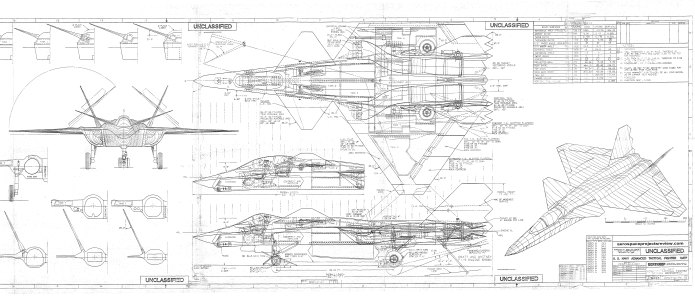A piece of NASA promo art, dating to around 1964 (plus or minus), showing the Saturn I, Saturn Ib and Saturn V to scale.
A high rez of this can be downloaded here:
The latest AIAA-Houston newsletter Horizons, January/February 2012, has a brief article by me on the Phoenix-E tourism SSTO. Free to download!
A painting from an old issue of “Lockheed horizons” depicts a STAR Clipper 1.5-stage-to-orbit early Space Shuttle design lifting off from a desert launch facility (probably White Sands or Vandenberg).
Much, much more on the STAR Clipper can be found in issue V3N2 of Aerospace Projects Review.
I put together a number of photos I recently took of Hill Aerospace Museums newly-restored F-104A into a free downloadable PDF booklet.
If you like this, feel free to distribute hither and yon. If you *really* like this, feel free to toss a dollar or three my way.
If there is interest, I will make more of this sort of thing… I have a vast collection of photos of aerospace and weapons systems that might be of interest.
In the mid 1960’s, Douglas produced designs for a Manned Orbital Research Laboratory. Much like the later Skylab, MORL was to be based in part on the S-IVb stage. Unlike Skylab, MORL was to be a much more fully integrated space station, with greater emphasis on functionality and less on low cost. It was to have included an internal centrifuge, and surprisingly large solar panels.
This design was featured in the F-23 derivatives article in the recent V3N2 issue of Aerospace Projects Review. This was an attempt by Northrop to adapt F-23 design elements to a Naval role, carrier-capable.
 You can download a 1.4 megabyte GIF file of the diagram. The link to the JPG file is HERE. To access it, you will need to enter a username and password. These are available on the first page of the Aerospace Projects Review V3N2 Addendum (available HERE) Note that both are case sensitive.
You can download a 1.4 megabyte GIF file of the diagram. The link to the JPG file is HERE. To access it, you will need to enter a username and password. These are available on the first page of the Aerospace Projects Review V3N2 Addendum (available HERE) Note that both are case sensitive.
This design was featured in the F-23 derivatives article in the recent V3N2 issue of Aerospace Projects Review. The unusual geometry was an attempt as radar reflection shaping.
You can download a 15.5 megabyte version of this diagram; the link is HERE. To access it, you will need to enter a username and password. The username: the first word in the body of the text on page 8 of APR issue V3N2. The password: the first word in the body of the text on page 24 of the same issue. Note that both are case sensitive.
A Rockwell handout card (late 1980’s to 1990 or so) showing an artists impression of their early NASP configuration. This is the same design as shown HERE, but in painting rather than model form.
You can download 7.9 and 1.1 megabyte JPG files of the illustrations. The links to the JPG files are HERE and HERE. To access them, you will need to enter a username and password. The username: the first word in the body of the text on page 5 of APR issue V1N1. The password: the first word in the body of the text on page 11 of the same issue. Note that both are case sensitive.